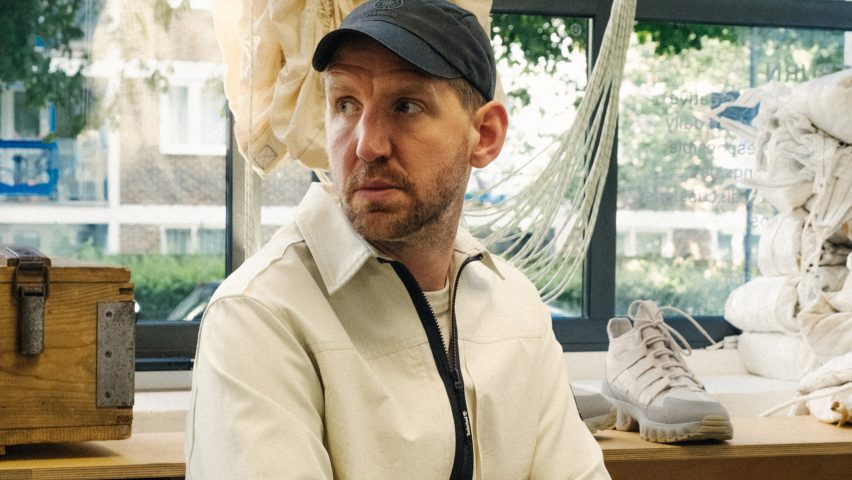
"I've seen the entire narrative change" around sustainable fashion says Christopher Raeburn
It has never been easier for designers and brands to access recyclable materials and close the clothing loop, says Christopher Raeburn in this interview.
Speaking to Dezeen from his studio, which is housed in the former Burberry textile factory in east London, the British designer explained that sustainable fashion has gone from fringe to mainstream since he started his brand in the late noughties.
Consumers "demanding more from brands"
This is partly driven, he said, by an increasingly climate-conscious society with higher expectations from brands.
"I've seen the entire narrative change in the 14 years that we've been in business," Raeburn told Dezeen. "A lot more people have woken up to the reality of the environment that we live in today."
"They are genuinely demanding more from brands in a way that I don't really think was happening on any kind of scale, certainly not 10 years ago."
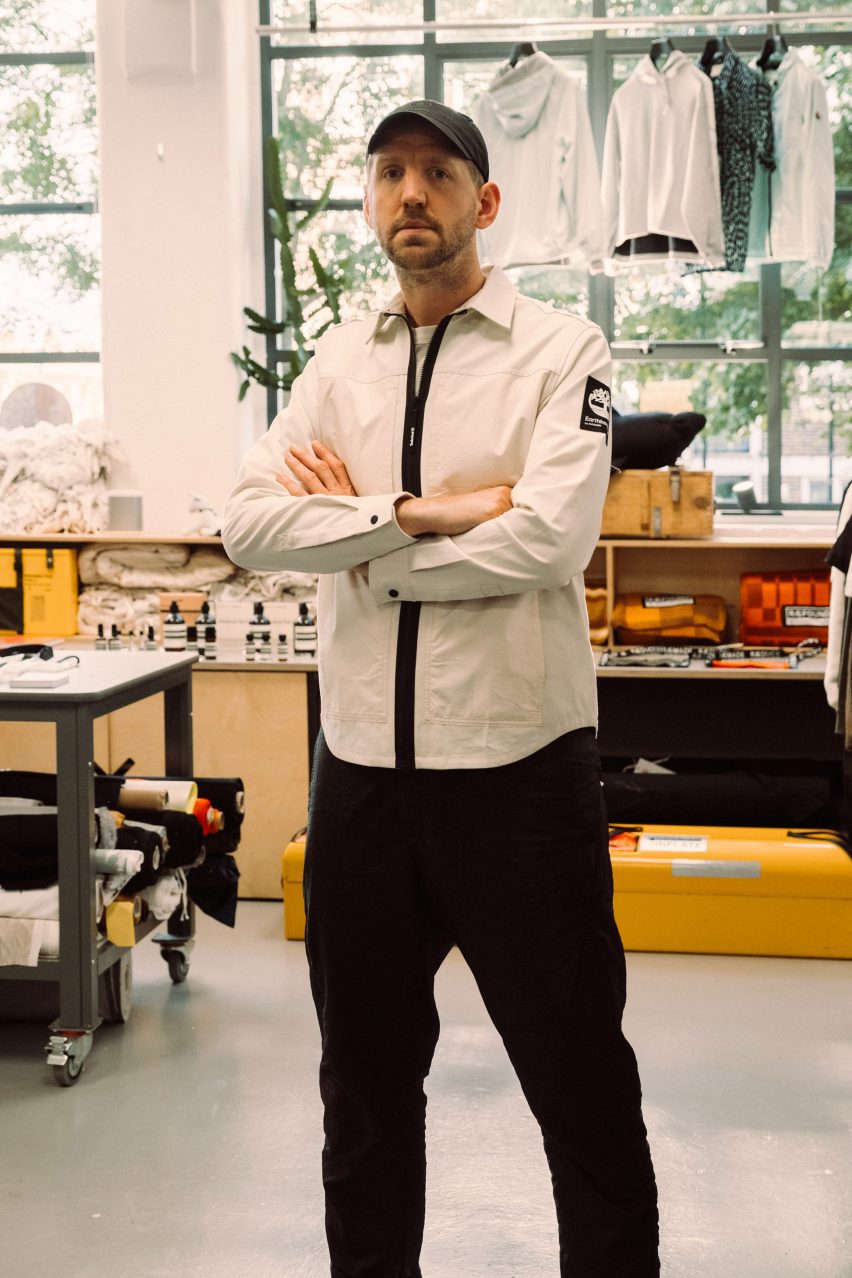
Raeburn launched his eponymous studio in 2009 and it has since become known for its simple, functional designs crafted from pre-worn utilitarian items.
The 40-year-old designer is often credited as a pioneer in upcycling thanks to the success of reworked lines, including a collection of jackets made from brightly coloured life rafts.
Recycled materials have become more affordable
Changes in shopping habits and growing customer concerns about the impact that waste clothing has on the planet have coincided with the availability of more affordable recycled materials, he said.
"When I first started Raeburn, recycled materials would be 30 to 50 per cent more expensive to purchase. Now you have parity, and sometimes you have more affordable recycled materials than virgin cloth."
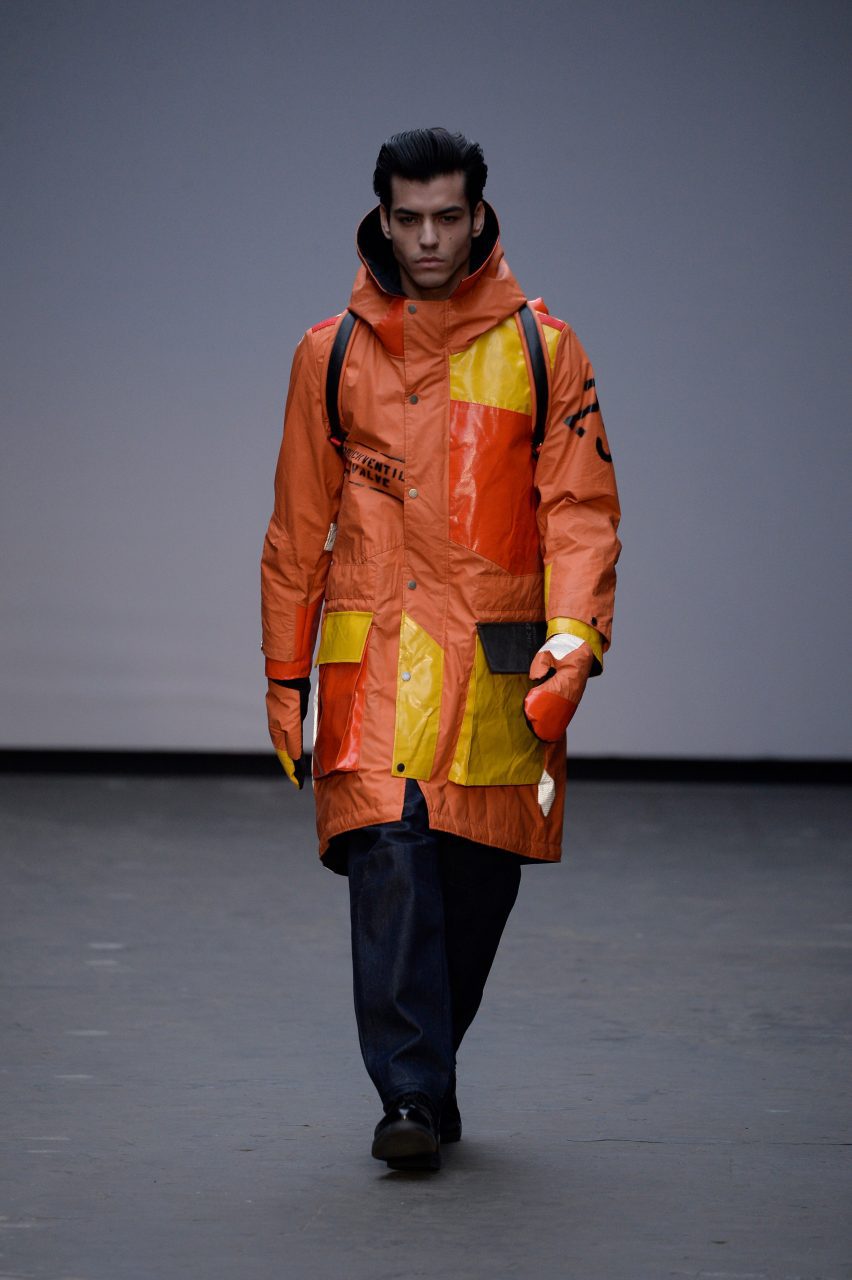
"Recycled polyethylene terephthalate (PET) is a really good example where prices have definitely come down – all of those plastic bottles that we're able to put into the recycling can be chipped into pellets, made into fibre and made into material," he added.
Raeburn was among several designers to use the material back in 2019 when he presented a collection made from reclaimed parachute nylon and recycled PET at London Fashion Week.
However, his interest in upcycling and recycling goes back to his childhood, where he spent much of his time outdoors as an Air Cadet in a rural village in Kent.
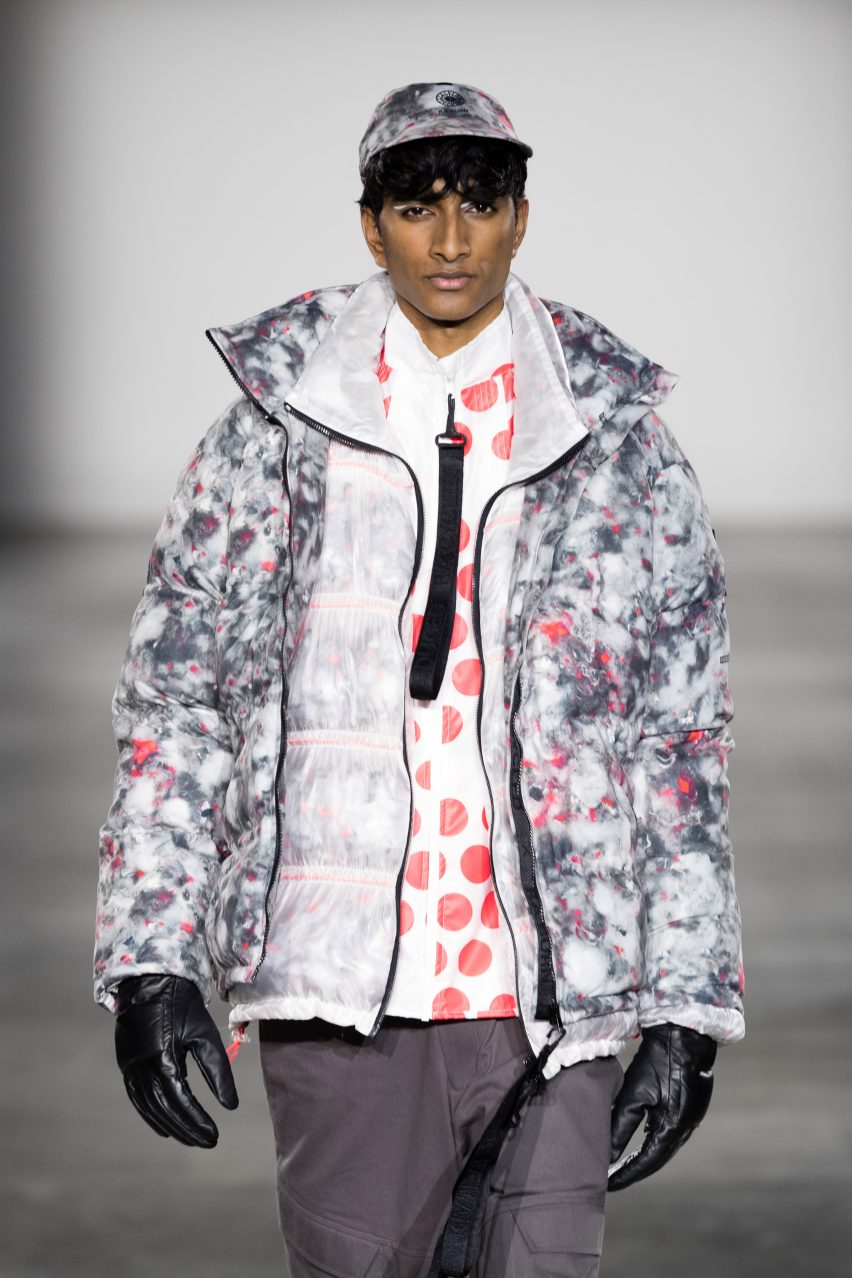
"I grew up with parents that were very much of the make-do-and-mend kind of generation so for me, it's about having a really pragmatic approach to design and trying to make good choices," Raeburn explained.
"A big part of why I design the way that I do today is because you were issued all of this kit in the Air Cadets," he said.
"Most of it was really bad – it was either really scratchy or really uncomfortable, or they issued waterproof jackets that we call crisp packets as it made so much noise when you moved and had no breathability – but it led me to look for things that were better."
Sourcing clothing to upcycle is "like archaeology"
Raeburn went on to study fashion at Middlesex University London before completing a master's at the Royal College of Art in 2006. As a student, he would thrift vintage military garments from markets across London to use for his projects.
"At the time, I was going through markets in places like Portobello Road and Goldhawk Road and Spitalfields," Raeburn said.
"I was finding original military jackets still wrapped in hessian, wax-proof paper and beautiful wool jackets from the 1950s that cost one pound each."
"For me, it was like archaeology finding all of this cool stuff that already existed and then starting to deconstruct it and rework it and it had all these incredible labels and buttons and all of this character already embedded in it," he recalled.
This commitment to reworking and recycling has stayed with him throughout his career and has evolved into his work with global brands and organisations such as Moncler, the V&A museum and Timberland.
His efforts have resulted in a number of accolades, including a prestigious Fashion Award and at the Drapers Sustainable Fashion awards.
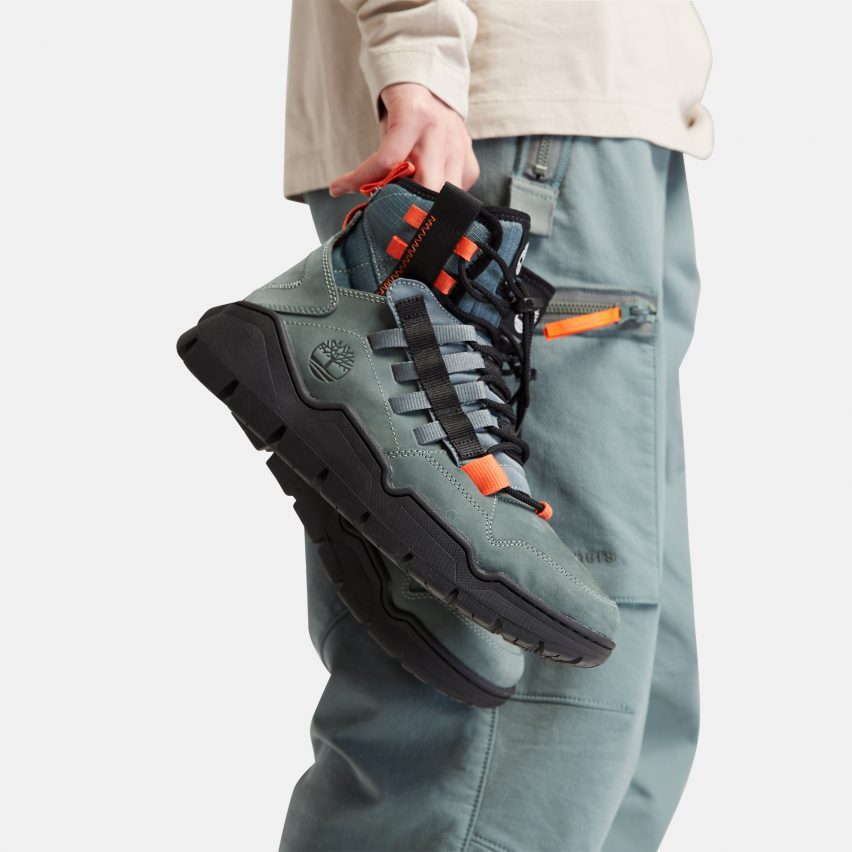
Despite changes in attitudes towards sustainability, just one per cent of recycled clothes are turned back into new garments. Meanwhile, 65 per cent of new clothes end up in landfill within 12 months.
The British designer says that these figures reflect the manufacturing processes used to make mass-produced garments within fast fashion, which often involve using glue to assemble items at speed.
"Unfortunately, what tends to happen still in the industry is we blend materials – we take a natural and then the synthetic and we blend it together. And at the moment that can't be extruded at all at the end of life at any kind of scale," explained Raeburn.
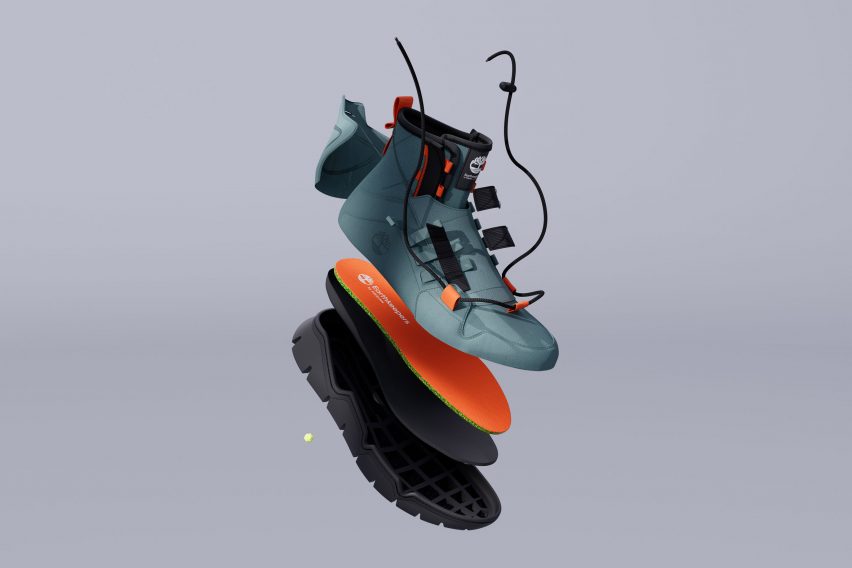
Trainers are one of the worst culprits, as the glue used to bond the uppers needs to be shredded when recycled, which requires large amounts of energy. Studies show that the average shoe takes anywhere between 50 and 1,000 years to break down in landfill.
Raeburn cites his latest boot for Timberland, the Timberloop EK+ Utility Boot, as a viable alternative. The boots have a removable inner sock made from 100 per cent recycled plastic, while the natural rubber outsoles can be easily removed by simply cutting one of the seams and unravelling the thread.
Wearers can therefore disassemble the boot easily at the end of its life and each part can be put into its own recycling stream.
Consumers can alternatively drop their worn shoes off at a Timberland store for recycling with an American company called Recircled.
"If we can make things from things that already exist and we can make those things repairable and enduring, or if we can make things from recycled materials or natural materials, then in theory, they can go back to the earth," said Raeburn.
The photography is courtesy of Timberland unless otherwise stated.